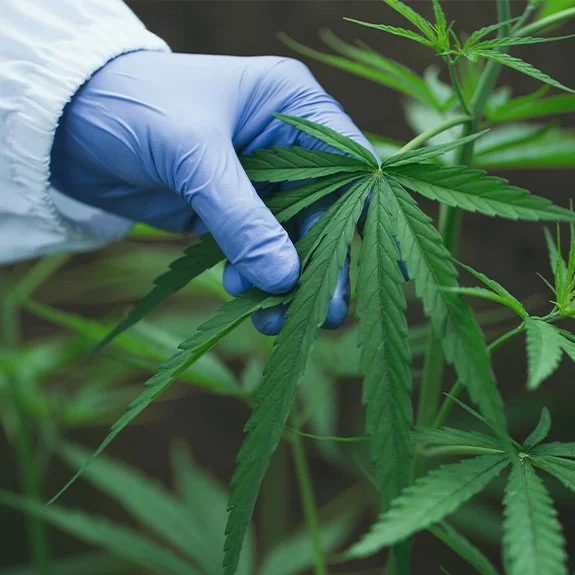Understanding Cannabis Pathogens: Managing Hop Latent Viroid
Hop Latent Viroid (HLV) is a significant threat in cannabis cultivation, presenting challenges that every grower must address. This article delves into the specifics of HLV, covering its symptoms, transmission methods, and impact on cannabis plants. Moreover, we explore how tissue culture techniques can help detect and eliminate this insidious pathogen.
What is Hop Latent Viroid (HLV)?
Hop Latent Viroid (HLV) is a small, circular RNA pathogen known to infect hop plants and cannabis. Unlike viruses, viroids do not code for proteins but interfere with the plant’s normal cellular functions, causing various symptoms that can significantly affect crop yield and quality.
Symptoms of HLV in Cannabis
HLV often presents subtle symptoms, making it challenging to diagnose early. Some common signs include:
Stunted Growth: Infected plants may show reduced growth rates, leading to smaller plants.
Leaf Deformation: Leaves may appear twisted or malformed, reducing photosynthetic efficiency.
Chlorosis: Yellowing of the leaves, particularly around the veins, is a common symptom.
Reduced Resin Production: Infected plants often produce less resin, which can impact the potency of the cannabis.
These symptoms can easily be mistaken for other stress factors, such as nutrient deficiencies or pest infestations, making accurate diagnosis crucial.
Transmission of HLV
HLV is highly transmissible and can spread through various methods:
Mechanical Transmission: Tools used for pruning or cloning can transfer the viroid between plants.
Infected Plant Material: Using clones or cuttings from infected plants can introduce HLV to healthy crops.
Contact Transmission: Physical contact between infected and healthy plants can facilitate the spread of HLV.
Given its ease of transmission, strict hygiene and sanitation protocols are essential in any cultivation setting.
Impact of HLV on Cannabis Plants
The impact of HLV on cannabis plants can be devastating. Infected plants often exhibit reduced vigor and yield, with some studies showing yield losses of up to 50%. The quality of the cannabis can also be affected, with lower resin production and altered cannabinoid profiles. This affects not only the economic value of the crop but also its therapeutic efficacy.
Detecting HLV in Cannabis
Early detection of HLV is critical for managing its spread and impact. Several diagnostic techniques can be employed, including:
PCR Testing: Polymerase Chain Reaction (PCR) tests are highly sensitive and can detect the presence of HLV RNA in plant tissues.
ELISA: Enzyme-Linked Immunosorbent Assay (ELISA) can detect HLV proteins in plant sap.
Tissue Culture: Tissue culture techniques can help identify infected plants by growing plant tissues in sterile conditions and testing for the viroid.
Managing HLV with Tissue Culture
Tissue culture is a powerful tool for managing HLV in cannabis cultivation. This technique involves growing plant cells or tissues in a sterile, controlled environment, allowing for the production of pathogen-free plantlets. Here’s how it helps:
Pathogen Elimination: Plants can be grown from small tissue samples to produce new plants free of viroids and other pathogens.
Genetic Preservation: Tissue culture allows the preservation of valuable genetic traits without the risk of transmission of pathogens.
Mass Propagation: Healthy, disease-free plantlets can be produced in large quantities, ensuring a consistent and high-quality crop.
At GreenWay Lab, we specialize in utilizing tissue culture to support cannabis growers. Our advanced techniques ensure you can maintain a healthy and productive crop, free from the threats posed by pathogens like HLV.
Conclusion
Understanding and managing Hop Latent Viroid is crucial for successful cannabis cultivation. Growers can mitigate the impact of this pathogen by recognizing the symptoms, implementing rigorous hygiene practices, and utilizing advanced detection and tissue culture techniques. At GreenWay Lab, we are committed to helping you safeguard your crops and achieve optimal yields.






Ensure the security and privacy of your cannabis cultivars with cold storage solutions that protect your intellectual property and provide exclusive access.